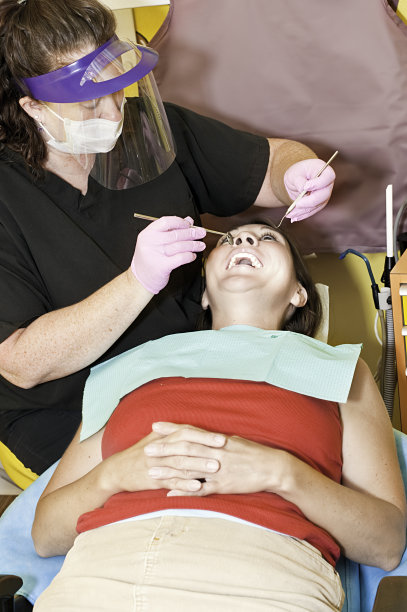Understanding the Process of Tooth Extraction and Its Importance for Dental Health and Overall Wellbeing
Summary: Tooth extraction is a common dental procedure significantly impacting overall health and wellbeing. This article delves into the necessity of tooth extractions, outlining their importance in preventing oral diseases, alleviating pain, and improving dental hygiene. The process of extraction is discussed, emphasizing the steps involved and aftercare required for a smooth recovery. Additionally, the role of dental professionals in ensuring patient comfort and safety during the procedure is highlighted. Understanding tooth extraction helps individuals recognize its critical role in maintaining not just dental health, but overall quality of life.
1. Importance of Tooth Extractions for Dental Health

Tooth extractions often serve a necessary function in preserving overall oral health. When teeth become severely decayed, fractured, or infected, the extraction becomes imperative to prevent the spread of bacteria to surrounding teeth and the jawbone. Ignoring these issues can lead to more complex dental problems requiring extensive treatments that could have been avoided.
Moreover, extractions play a vital role in orthodontics. In certain cases, overcrowding in the mouth can lead to misaligned teeth that hinder proper biting and chewing functions. By removing one or several teeth, patients can achieve a straighter smile and an enhanced bite which can also improve their overall oral function.
Apart from physical health, healthy teeth contribute to mental wellbeing. Individuals often feel more confident when their dental issues are resolved. Therefore, extracting problematic teeth not only helps in maintaining oral health but also boosts the self-esteem of the patient.
2. The Tooth Extraction Process Explained
The tooth extraction process involves specific steps aimed at ensuring the safety and comfort of the patient. Initially, a dental professional assesses the situation. They will conduct an X-ray to evaluate the tooths roots and surrounding bone. This step is crucial, as it helps in formulating a precise extraction plan tailored to the patient’s needs.
Once the assessment is completed, anesthesia is administered to ensure the patient is comfortable during the extraction. Local anesthesia can numb the specific area, while sedation dentistry might be employed for individuals with dental anxiety. Understanding the different anesthesia options prepares patients for what to expect, making the procedure less daunting.
Following anesthesia, the dentist carefully extracts the tooth. This may involve loosening the tooth using special instruments before removing it entirely. Patients are informed about the sounds and sensations they may experience, which helps alleviate fears and anxiety associated with the procedure.
3. Aftercare Following Tooth Extraction
Aftercare is a crucial component following any tooth extraction. Patients are typically given specific instructions to promote healing and minimize discomfort. Immediately after the procedure, it’s essential to bite down gently on gauze pads for at least 30 minutes to control bleeding. Patients should monitor their bleeding and consult their dentist if it persists longer than expected.
Over the next few days, patients are advised to avoid strenuous activities and refrain from using straws, as these actions can dislodge blood clots necessary for healing. Instead, sticking to a soft diet helps ease discomfort and ensures nutrition during the recovery period. Ice packs can be applied to reduce swelling, further promoting a smooth healing process.
Follow-up appointments are typically scheduled to monitor the healing process. During these visits, dental professionals will assess the extraction site and can provide additional guidance on maintaining oral hygiene without disturbing the area. Adhering to these aftercare instructions significantly reduces the risk of complications such as infections.
4. The Role of Dental Professionals in Extractions
The expertise of dental professionals is paramount during tooth extractions. Well-trained dentists not only perform the procedure but also ensure the patients comfort and safety throughout the process. Their skills in identifying the right anesthesia and handling complex extractions contribute significantly to effective pain management.
Moreover, dental receptiveness is essential, as professionals are tasked with explaining the entire procedure to alleviate any anxieties patients may have. Encouraging open communication allows patients to express concerns, helping establish a trusting relationship that ensures a better overall experience.
After the extraction, dental professionals also play a key role in educating patients on oral care and monitoring the healing process. This support fosters a sense of confidence and reassurance for patients as they transition from the dental chair to home care.
Summary:
In conclusion, understanding the process of tooth extraction provides insights into its significance for dental health and broader wellbeing. Whether addressing decay, misalignment, or pain, extractions serve as a foundational aspect of effective dental care. With proper aftercare and the expertise of dental professionals, the experience of tooth extraction can lead to improved health outcomes and enhanced quality of life.
This article is compiled by Vickong Dental and the content is for reference only


